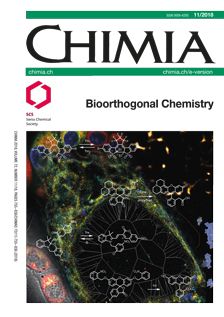Platforms for Bioorthogonal Oligonucleotide-templated Reactions: Translating Concepts into Devices
DOI:
https://doi.org/10.2533/chimia.2018.809PMID:
30514424Keywords:
Oligonucleotide-templated reaction, Sensing, Hydrogel, Diagnostic, Paper-microfluidicAbstract
The exponential improvements made in DNA sequencing technologies, together with the rapidly declining associated costs, has increasingly led to the expansion of the field of personalised genomic medicine. Changes in the sequence or copy number of specific deoxyribonucleic acid (DNA) or ribonucleic acid (RNA) molecules represent key signatures for the diagnosis, prognosis, classification and monitoring of a broad range of pathologies, most notably cancer. Technologies that can detect these changes require analytical tools that can detect DNA or RNA with high sensitivity and high specificity. Sensing based on bioorthogonal oligonucleotide-templated reactions (OTRs) has been recognised as an elegant strategy that satisfies these criteria and was successfully used for the quantitative detection of nucleic acids both in vitro and in vivo. Herein, we will focus on recent efforts to implement bioorthogonal OTRs into clinically useful biosensors using probes immobilised on or embedded in customised materials and platforms.Downloads
Published
2018-11-30
Issue
Section
Scientific Articles
License
Copyright (c) 2018 Swiss Chemical Society

This work is licensed under a Creative Commons Attribution-NonCommercial 4.0 International License.
How to Cite
[1]
Chimia 2018, 72, 809, DOI: 10.2533/chimia.2018.809.







